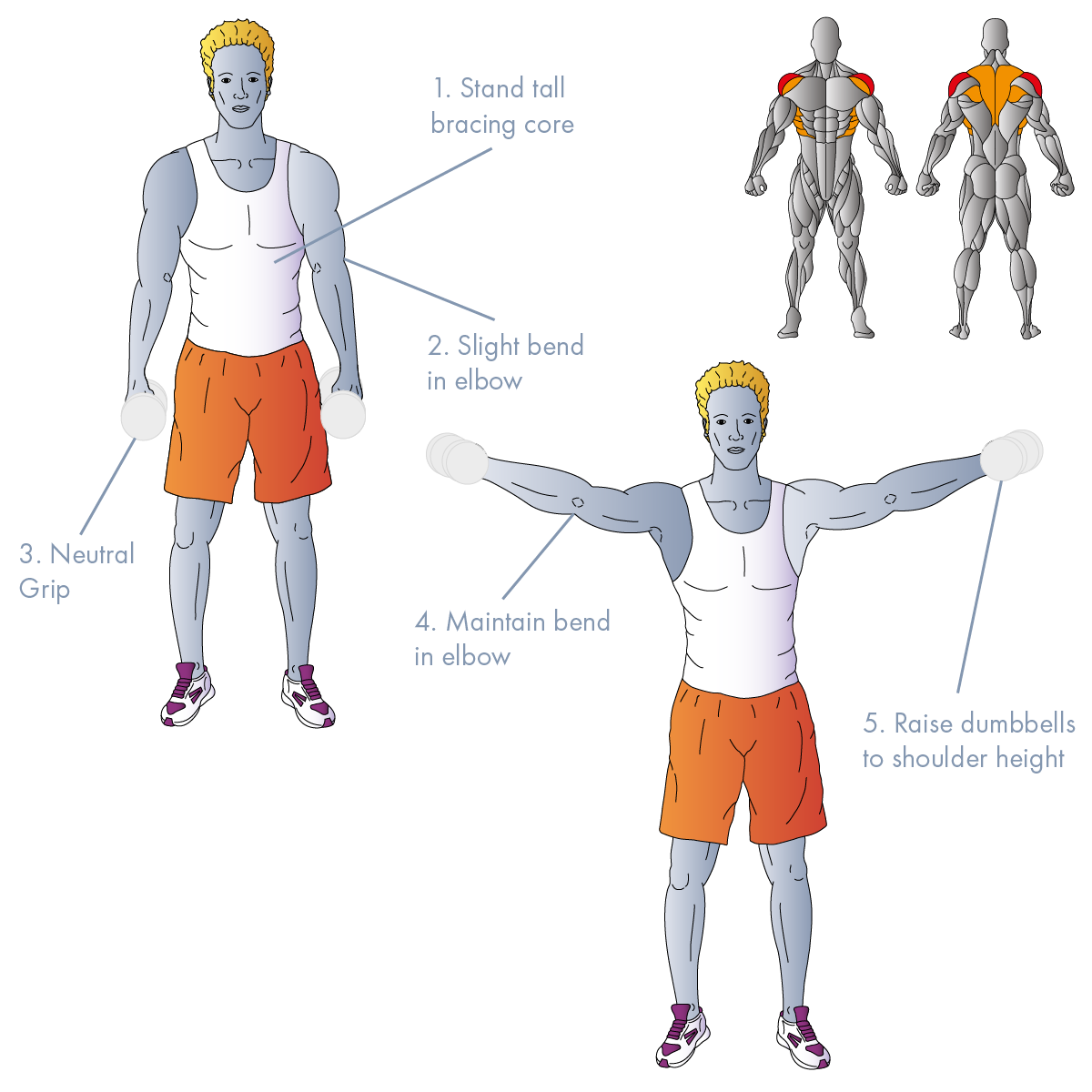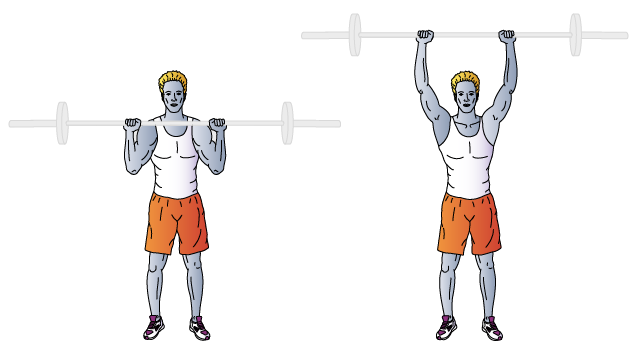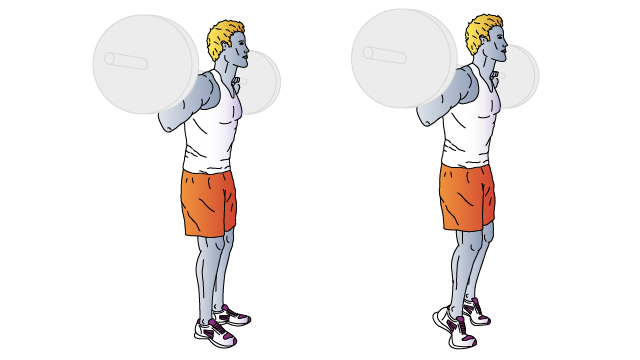Anterides use cookies to ensure you receive the best experience on this website. Find out more about cookies.
LEG & SHOULDERS SINGLE-SETS

A great entry-level workout to develop upper and lower body symmetry for a strong and balanced physique using the most effective mass building exercises for your legs and shoulders.
LATERAL RAISE

Also known as the Dumbbell Side Raise, this exercise is a basic isolation arm exercise that can also be performed with a cable machine or kettlebells. It involves raising your arms out to the side to work and strengthen your shoulder muscles, specifically your lateral deltoids which give your shoulders the characteristic ‘boulder shoulder’ rounded appearance.
Skill Level: Beginner
Training: Strength
Type: Isolation
Force: Push
Equipment: Dumbbell
1° Muscles: Lateral Deltoids
2° Muscles: Anterior Deltoid, Supraspinatus, Trapezius, Serratus Anterior
SET-UP
- Hold a pair of dumbbells with a neutral grip (palms facing inward).
- Stand tall (neutral spine, chest up and chin up) with your feet shoulder-width apart.
- Brace your core.
- Slightly bend your arms at the elbow.
EXECUTION
- Inhale.
- Keeping your torso stationary (avoid swinging) and keeping the slight bend in your elbow fixed, exhale as you raise the dumbbells directly out to your sides.
- As you raise the dumbbells rotate your wrists inward (forward) to keep them parallel to the floor – this is referred to as a ‘pouring’ motion.
- Continue to raise the dumbbells to shoulder height.
- Pause at the top of the lift before inhaling as you slowly lower the weights back to the start position.
- Repeat for the prescribed number of reps and sets.
- Go light, if the weights are too heavy, and you'll be forced to swing the weights up.
- Brace your core, virtually the entire movement involves your core muscles. Bracing your core not only prevents swaying but also allows for a greater weight to be used.
- Do not allow the weights to stray forward. If they do, it’s a sure sign your weights are too heavy, in which case you’ll be working your anterior deltoids instead of your lateral deltoids. Always keep the weight to your side.
- Keep a slight bend in your elbows for the entire exercise to minimize triceps involvement.
- Lead with your elbows so that at the top of the lift they are (though not necessarily the dumbbells) directly lateral to your shoulders. If your elbows drop lower than your wrists, the anterior deltoids become the prime movers instead of the lateral deltoids.
- Don't lift the dumbbells too high. If you lift your arms above parallel to the floor you will lose tension on your deltoids and transfer it to your trapezius muscle.
- Instead of lifting both dumbbells simultaneously perform this exercise unilaterally where one arm is lifted at a time, this allows you to focus on one side at a time.
- Seated Lateral Raise
- One-Arm Cable Lateral Raise
- Side-Lying Lateral Raise









